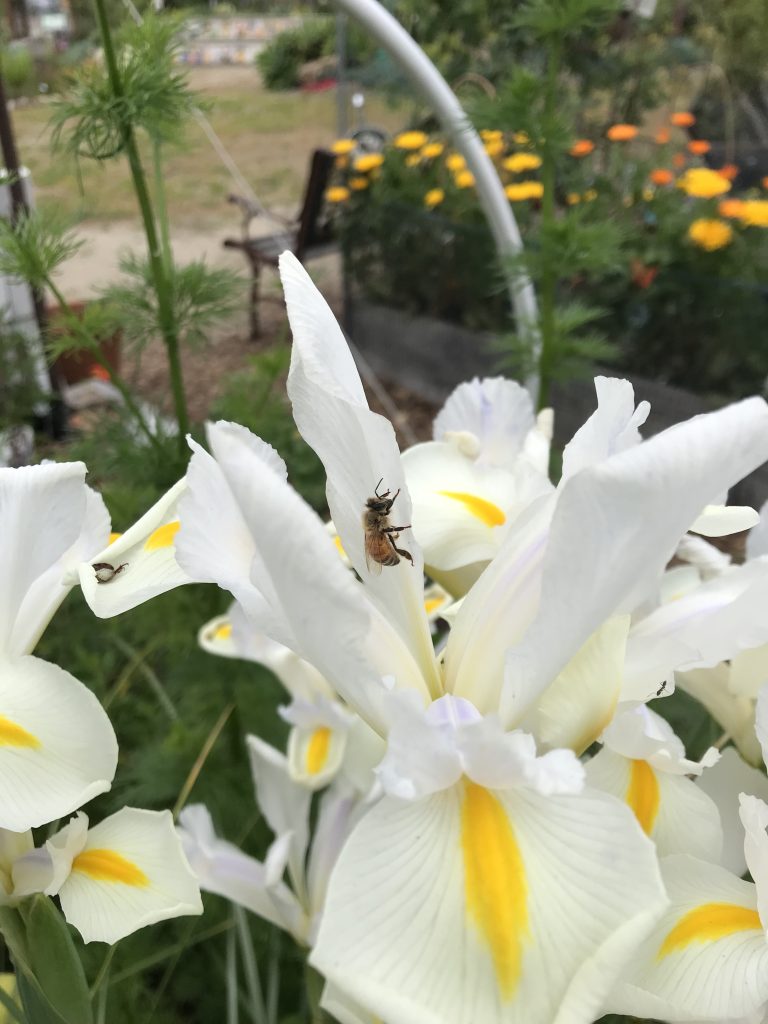
June is National Pollinator Month. During this time we give a hearty round of applause to these invaluable creatures.
In this high-performing group are bees, wasps, flies, beetles, butterflies, moths, and some bird species. Pollinators are responsible for most of the food we eat, much of the clothes we wear and the splendor of blooms everywhere.
To perform their work pollinators need a year-round source of nectar. You can grow nectar plants for pollinators from January through December whether you have a full-sized farm, a garden bed or a collection of pots. This will guarantee that their performance continues.
One way to serve a nectar-rich meal for pollinators is to allow your vegetables to go to flower. Once they are past their prime leave them in the ground and their blooms will provide nectar. Greens, such as spinach, arugula and lettuce produce flower heads that are visited by swallowtail butterflies. Honey bees are attracted to blooming Brassicaceae plants including broccoli, cabbage and kale. Look for ladybirds on the white bouquets formed by carrots, turnips and parsnips. And the blossoms of the onion family are irresistible to Monarch butterflies.
Another way to ensure nectar is available in every season is to plant natives. Indigenous to our region, natives are a win-win. They flourish in our climate and native pollinators love them. Perennial natives such as sage, monkey flower and seaside daisy will bloom most of the year. Native annuals including California poppy, clarkia and lupine are early spring bloomers and reseed year after year. Many natives are suitable for garden beds as well as container gardening. These include bladder pod, desert globe mallow and the smaller Dudleyas. To locate natives for your area go to https://calscape.org.
Lastly, become a citizen scientist to discover plants that might work in your planting spaces.
Observe bloom times of gardens in your neighborhood. Note which pollinators prefer what plants. Visit local community gardens throughout the seasons for inspiration.
The San Carlos Community Garden in San Diego is open Saturday mornings and hosts educational workshops throughout the year. La Mesa’s Community Garden in Memorial Park also offers informational events. Learn more about year-round nectar-producing natives at https://rb.gy/q8kv7v.
Pollinators deserve a standing ovation in June as well as the entire year.
Reflect on what you can do to work in cooperation with them. And next time you take a sip of your favorite juice, raise your cup to the mighty pollinators that made that possible.
Editor’s note: This article was written by Mairs Ryan. A native of Santa Barbara, Ryan has gardened wherever she has lived. It was while working in Scotland that she was first introduced to sustainable gardening methods. She continues practicing those today. Her science students and her have created edible school gardens using these same methods. She is also active with La Mesa’s city government, in particular the Environmental Sustainability Commission. Finally, she is a member of the San Carlos Community Garden where she maintains a designated Monarch Way Station.
Courtesy image













Discussion about this post